Master Plants
Ancient Wisdom Teachers of the Amazon
Master Plants
Ancient Wisdom Teachers of the Amazon
The true master healers are the plants themselves...
The Amazon Rainforest makes up over half of the remaining forest on Earth. It is home to an estimated 80,000 plant species, including 16,000 trees. It is the most bio-diverse region on Earth.
Tribal peoples hold vast ancestral knowledge for natural healing with Amazonian plant medicines. Amongst them, the Shipibo people are especially renowned for their extensive and well-preserved healing tradition.
Shipibo traditional medicine is founded on a profound appreciation of the spiritual essences in nature. Through exploration of those essences, Shipibo shamans discovered that certain plants hold sacred wisdom within them. These are known as the Master Plants. They can bring deep healing and transformation to our whole being.
Plant DNA in the Amazon is millions of years old. The oldest human DNA yet found is just 430,000 years old.
The true master healers are the plants themselves...
The Amazon Rainforest makes up over half of the remaining forest on Earth. It is home to an estimated 80,000 plant species, including 16,000 trees. It is the most bio-diverse region on Earth.
Tribal peoples hold vast ancestral knowledge for natural healing with Amazonian plant medicines. Amongst them, the Shipibo people are especially renowned for their extensive and well-preserved healing tradition.
Shipibo traditional medicine is founded on a profound appreciation of the spiritual essences in nature. Through exploration of those essences, Shipibo shamans discovered that certain plants hold sacred wisdom within them. These are known as the Master Plants. They can bring deep healing and transformation to our whole being.
A Different Class of Plants for Deep Healing & Learning
Shipibo shamanism distinguishes two main classes of Amazonian plant medicines:
- Herbal plants for physical healing (the natural remedies – Rao); and
- Master Plants for deep, holistic healing of body, mind, heart and spirit.
Many Master Plants carry potent herbal medicinal properties. But they are mostly of special interest to Shipibo shamans for the higher wisdoms they may impart. And for their capacity to bring about deep healing and re-organization of the emotional, psychological and energetic forms that reside within us.
The ancient wisdom and healing power of these special Teacher plants may be accessed slowly by following disciplined Shipibo Master Plant Dieta practice (Dieta, or Sama), typically over years. In our Ayahuasca Retreats you can experience Dieta for yourself, with plants chosen uniquely for your healing needs.
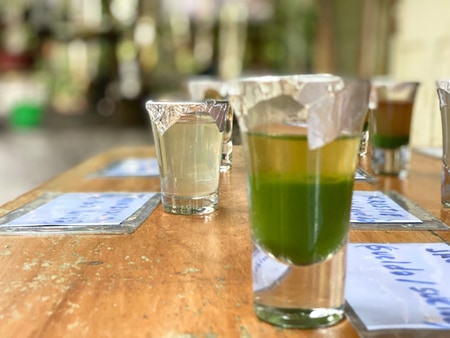
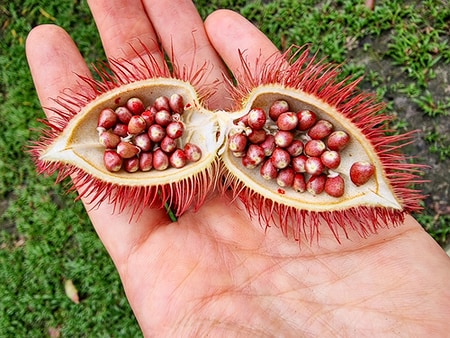
A Different Class of Plants for Deep Healing & Learning

Shipibo shamanism distinguishes two main classes of Amazonian plant medicines:
- Herbal plants for physical healing (the natural remedies – Rao); and
- Master Plants for deep, holistic healing of body, mind, heart and spirit.
Many Master Plants carry potent herbal medicinal properties. But they are mostly of special interest to Shipibo shamans for the higher wisdoms they may impart. And for their capacity to bring about deep healing and re-organization of the emotional, psychological and energetic forms that reside within us.

Shipibo Master Plants at Caya Shobo
- CAUTION IS STRONGLY ADVISED -
Many plant medicines are highly toxic and/or have dangerous interactions with medications. Always consult with a healthcare professional before using plant medicines.
Caya Shobo makes no claim or promises about the curing of illness of any kind, or achievement of specific outcomes from our services. When using information from these web pages or linked resources, you do so at your own risk and acknowledge that Caya Shobo is not responsible for any consequences arising from your use of the information.
Achiote (Bixa orellana)
In Latin America, the bright red seeds of the Achiote tree, also known as annatto are commonly used as a food ingredient and coloring agent. Achiote seeds may be used both internally and externally and have many potential health benefits including antioxidant, anti-inflammatory, and antimicrobial properties.
In Shipibo shamanism, the leaves of the Achiote tree are used in Dieta practice. It is a relatively achievable Dieta, and is a good option for a shorter period. Energetic benefits of Achiote include protection from the energy of blood, which can be especially useful if you work in healthcare or with meat food preparation.
Shipibo parents will sometimes paint the faces of their children with the bright red dye of the Achiote seeds for protection.
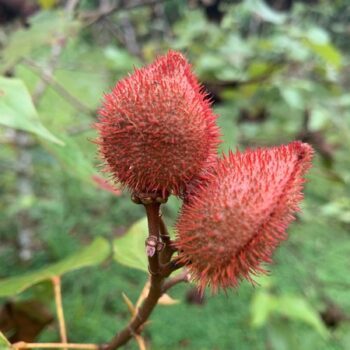
Achiote (Bixa orellana)

In Latin America, the bright red seeds of the Achiote tree, also known as annatto are commonly used as a food ingredient and coloring agent. Achiote seeds may be used both internally and externally and have many potential health benefits including antioxidant, anti-inflammatory, and antimicrobial properties.
In Shipibo shamanism, the leaves of the Achiote tree are used in Dieta practice. It is a relatively achievable Dieta, and is a good option for a shorter period. Energetic benefits of Achiote include protection from the energy of blood, which can be especially useful if you work in healthcare or with meat food preparation.
Shipibo parents will sometimes paint the faces of their children with the bright red dye of the Achiote seeds for protection.
Aire Sacha (Kalanchoe pinnata)
Aire sacha is both an Amazonian herbal plant medicine. The macerated leaves of Aire Sacha may be used to make a tea to treat headache, vomiting, and colic gases. A poultice of the leaves can also be applied externally to reduce swelling. Aire sacha is also used in flower baths to elevate general energies.
In Dieta practice, the master Shipibo shamans (Onányas) may prescribe Aire Sacha to help heal hearing loss not attributed to physiological causes (i.e. induced by emotional or psychological trauma).
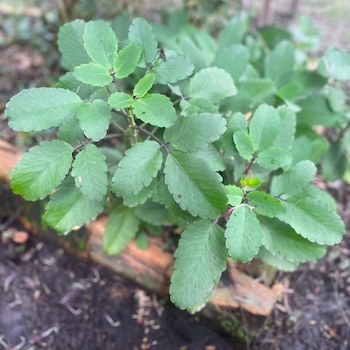
Aire Sacha (Kalanchoe pinnata)

Aire sacha is an Amazonian herbal plant medicine. The macerated leaves of Aire Sacha may be used to make a tea to treat headache, vomiting, and colic gases. A poultice of the leaves can also be applied externally to reduce swelling. Aire sacha is also used in flower baths to elevate general energies.
In Dieta practice, the master Shipibo shamans (Onányas) may prescribe Aire Sacha to help heal hearing loss not attributed to physiological causes (i.e. induced by emotional or psychological trauma).
Ajo Sacha (Mansoa Alliacea)
Also known as wild garlic, Ajo Sacha is a powerful Shipibo Master Plant and herbal medicine with numerous benefits. Ajo Sacha purifies the blood, cleans the liver and stomach, and has strong antiviral, antibacterial and anti-inflammatory properties. Ajo Sacha is also a beneficial plant medicine for alleviating asthma and respiratory infections and for general physical invigoration.
In Dieta practice, Ajo Sacha is thought to help unearth and clean deeply buried grief and can gift greater confidence and clarity in life and in relationships. It’s potential to help enhance self-esteem and decision making ability make this a great Teacher Plant for building a strong energetic foundation in your Dieta path.
Ajo Sacha is also considered a powerful ally to many Shipibo shamans, and may be Dieted again and again to achieve greater levels of shamanic mastery.
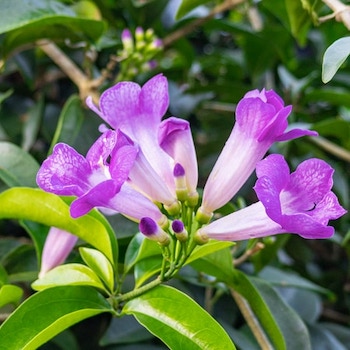
Ajo Sacha (Mansoa Alliacea)

Also known as wild garlic, Ajo Sacha is a powerful Shipibo Master Plant and herbal medicine with numerous benefits. Ajo Sacha purifies the blood, cleans the liver and stomach, and has strong antiviral, antibacterial and anti-inflammatory properties. Ajo Sacha is also a beneficial plant medicine for alleviating asthma and respiratory infections and for general physical invigoration.
In Dieta practice, Ajo Sacha is thought to help unearth and clean deeply buried grief and can gift greater confidence and clarity in life and in relationships. It’s potential to help enhance self-esteem and decision making ability make this a great Teacher Plant for building a strong energetic foundation in your Dieta path.
Ajo Sacha is also considered a powerful ally to many Shipibo shamans, and may be Dieted again and again to achieve greater levels of shamanic mastery.
Deep, lasting healing with Amazonian plants
Our mission is to provide a sanctuary where real healing is possible. In our traditional Shipibo Ayahuasca Retreats in Peru we work with Ayahuasca together with the Master Plants.
Our highly advanced master Shipibo shamans (Onányas) choose specific plants to suit your unique healing needs. Our experienced western facilitators give you guidance and support as you experience Ayahuasca and learn about traditional Shipibo Dieta practice.
Albahaca (Ocimum campechianum)
knAlbahaca or wild basil (distinct from culinary basil) is an aromatic medicinal shrub with many common herbal uses. Albahaca leaf tea infusions are used to treat stomach pain and other digestive disorders, and to cleanse the digestive system and kidneys. It is also used to treat inflammation and diabetes, and to regulate blood pressure. The juice of albahaca leaves is used externally to treat various skin conditions, clear eye tiredness and open visions during Ayahuasca Ceremony.
In Shipibo shamanism, Albahaca is recognized as a Master Plant named Peitoro Ininti, meaning “round-leafed perfume.” The aromatic leaves of albahaca are commonly used in shamanic energy-cleansing flower baths, vapor and yoni steams, and vomitivo or purgative cleansing treatments.
As a shamanic Dieta, Albahaca is prescribed for its energetic cleansing power and its perfume (Inin), and especially for clearing the energy of death or dead spirits. Albahaca is also good for unearthing and clearing away general darkness in the body, and bringing abundance to the Dieter.
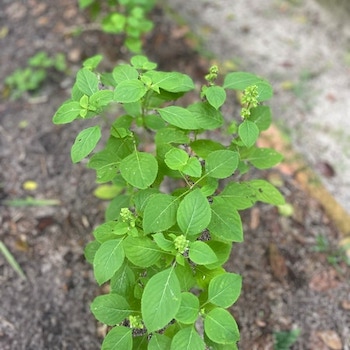
Albahaca (Ocimum campechianum)

Albahaca or wild basil (distinct from culinary basil) is an aromatic medicinal shrub with many common herbal uses. Albahaca leaf tea infusions are used to treat stomach pain and other digestive disorders, and to cleanse the digestive system and kidneys. It is also used to treat inflammation and diabetes, and to regulate blood pressure. The juice of albahaca leaves is used externally to treat various skin conditions, clear eye tiredness and open visions during Ayahuasca Ceremony.
In Shipibo shamanism, Albahaca is recognized as a Master Plant named Peitoro Ininti, meaning “round-leafed perfume.” The aromatic leaves of albahaca are commonly used in shamanic energy-cleansing flower baths, vapor and yoni steams, and vomitivo or purgative cleansing treatments.
As a shamanic Dieta, Albahaca is prescribed for its energetic cleansing power and its perfume (Inin), and especially for clearing the energy of death or dead spirits. Albahaca is also good for unearthing and clearing away general darkness in the body, and bringing abundance to the Dieter.
Algodon (Gossypium Barbadense)
A tropical species of the cotton tree, Gossypium Barbadense grows throughout the western Amazonian rainforest basin. Preparations of the leaves and roots of the cotton tree are used for a variety of herbal benefits including as a diuretic, vulnerary (to treat wounds), anti-hemorrhoidal, as an oxytocic (to promote contractions) and as an antiseptic. It is also used to treat dental abscesses, ear pain, diarrhea, stomach cramps and inflammation of the kidneys.
In Shipibo shamanism Hojas de Algodon (leaves of the cotton tree) are used as a herbal tea infusion (“agua de tiempo”) for their calming effect on the nervous system. This Master Plant may also be dieted as a gentle Dieta to ease pain associated with heart problems or surgery.
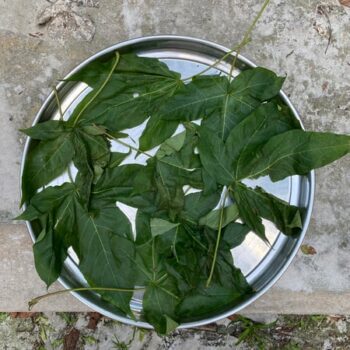
Algodon (Gossypium Barbadense)

A tropical species of the cotton tree, Gossypium Barbadense grows throughout the western Amazonian rainforest basin. Preparations of the leaves and roots of the cotton tree are used for a variety of herbal benefits including as a diuretic, vulnerary (to treat wounds), anti-hemorrhoidal, as an oxytocic (to promote contractions) and as an antiseptic. It is also used to treat dental abscesses, ear pain, diarrhea, stomach cramps and inflammation of the kidneys.
In Shipibo shamanism Hojas de Algodon (leaves of the cotton tree) are used as a herbal tea infusion (“agua de tiempo”) for their calming effect on the nervous system. This Master Plant may also be dieted as a gentle Dieta to ease pain associated with heart problems or surgery.
Ayapana (Ayapana triplinervis)
Ayapana is a tropical shrub, the leaves of which are commonly used throughout Central and South America as herbal medicine with astringent, anti-inflammatory and anti-tumorous properties. The leaves and stem can be made into a tea to treat colic, stomach pain, nausea and vomiting and into a poultice to stop bleeding or hemorrhage.
Ayapana is also used as a Master Plant in Shipibo Dieta practice to attract beneficial healing “spirits”, and to heal the mind. Ayapana leaves have a strongly fragrant aroma, and are often used in energy cleansing flower baths.
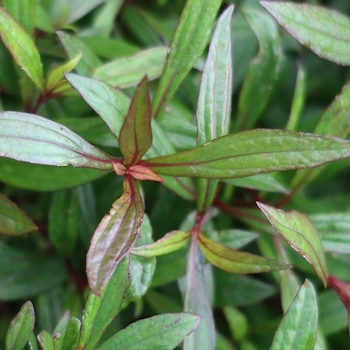
Ayapana (Ayapana triplinervis)

Ayapana is a tropical shrub, the leaves of which are commonly used throughout Central and South America as herbal medicine with astringent, anti-inflammatory and anti-tumorous properties. The leaves and stem can be made into a tea to treat colic, stomach pain, nausea and vomiting and into a poultice to stop bleeding or hemorrhage.
Ayapana is also used as a Master Plant in Shipibo Dieta practice to attract beneficial healing “spirits”, and to heal the mind. Ayapana leaves have a strongly fragrant aroma, and are often used in energy cleansing flower baths.
“I am still in awe and deep reverence for the Master Plants and their potency; the wisdom the plants allow us to see and feel is beyond word and price.”
Evelyne S
Azucena (Lilium candidum)
An infusion of the Azucena bulb and flowers is used as a purgative (“vomitivo”) to cleanse toxins from the digestive system and blood before Ayahuasca Ceremony or opening a Plant Dieta. It is the more gentle vomitivo choice used at Caya Shobo.
Azucena is anti-bacterial, astringent, disinfectent, highly demulcent (relieves irritation), expectorant (clears mucus from airways) and can also be used to regulate menstruation and moisturize the skin. Azucena stimulates and dilates the arteries and helps to open the visions in Ayahuasca Ceremony.
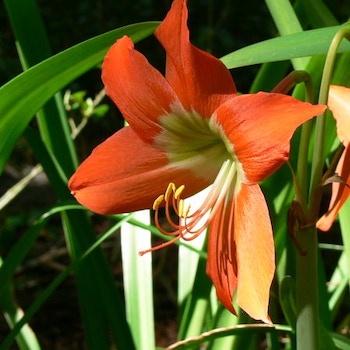
Azucena (Lilium candidum)

An infusion of the Azucena bulb and flowers is used as a purgative (“vomitivo”) to cleanse toxins from the digestive system and blood before Ayahuasca Ceremony or opening a Plant Dieta. It is the more gentle vomitivo choice used at Caya Shobo.
Azucena is anti-bacterial, astringent, disinfectent, highly demulcent (relieves irritation), expectorant (clears mucus from airways) and can also be used to regulate menstruation and moisturize the skin. Azucena stimulates and dilates the arteries and helps to open the visions in Ayahuasca Ceremony.
Boahuasca (Gouania lupuloides)
Used principally for physical healing purposes, Boahuasca is a strong Master Plant vine helpful in the treatment of a range of known illnesses. It is commonly used to help combat cancer of the stomach, intestines and ovaries, to improve liver function, and to purify the blood, and treat anaemia.
There is a beautiful legend in the Shipibo tradition which teaches of Boahuasca’s miraculous power to heal itself by re-binding wherever it has been cut. Interestingly it is known amongst the Shipibo shamans as a powerful Dieta treatment to strengthen connective tissue in the body.
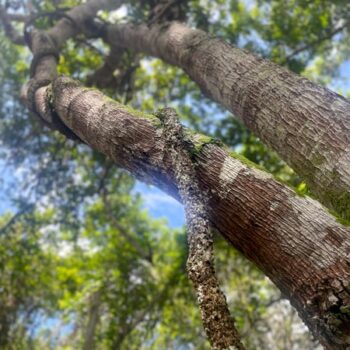
Boahuasca (Gouania lupuloides)

Used principally for physical healing purposes, Boahuasca is a strong Master Plant vine helpful in the treatment of a range of known illnesses. It is commonly used to help combat cancer of the stomach, intestines and ovaries, to improve liver function, and to purify the blood, and treat anaemia.
There is a beautiful legend in the Shipibo tradition which teaches of Boahuasca’s miraculous power to heal itself by re-binding wherever it has been cut. Interestingly it is known amongst the Shipibo shamans as a powerful Dieta treatment to strengthen connective tissue in the body.
Bobinsana (Calliandra SP, Mimosaceas)
A very beautiful and hardy bush that grows on the river banks in the Amazon, the flower, leaves and bark of Bobinsana are used as herbal medicine to regulate and purify the blood, treat postpartum anomalies such as prolapse or water retention, and alleviate rheumatism and arthritis. A tea prepared from the flower is used to soothe stress.
Bobinsana is also renowned as a powerful Master Plant used in Shipibo Dieta practice to open a connection with the spiritual world and clean childhood memories. It is also dieted to enhance dreams and visions, and to help foster a learning relationship with the plants. There is a Shipibo legend about a golden eagle which nests inside the Bobinsana bush who is sometimes seen in shamanic visions or dreams.
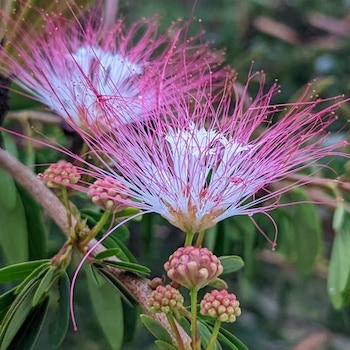
Bobinsana (Calliandra SP, Mimosaceas)

A very beautiful and hardy bush that grows on the river banks in the Amazon, the flower, leaves and bark of Bobinsana are used as herbal medicine to regulate and purify the blood, treat postpartum anomalies such as prolapse or water retention, and alleviate rheumatism and arthritis. A tea prepared from the flower is used to soothe stress.
Bobinsana is also renowned as a powerful Master Plant used in Shipibo Dieta practice to open a connection with the spiritual world and clean childhood memories. It is also dieted to enhance dreams and visions, and to help foster a learning relationship with the plants. There is a Shipibo legend about a golden eagle which nests inside the Bobinsana bush who is sometimes seen in shamanic visions or dreams.
Profoundly honoring the Master Plants as sacred Teacher spirits
Canela (Sacha Canela, Ocotea aciphyllaa)
Sacha Canela, also known as Cinnamon of the Americas, is a tree native to the Ucayali region in the Amazon that grows to about 12-18m tall. It is one of the most popular traditional plant medicines of the jungle. Like culinary cinnamon, it contains cinnamaldehyde which has powerful antimicrobial and anti-inflammatory properties. Canela is a traditional remedy used to fight colds, flu, bronchitis, and other infections. It is also used to facilitate digestion and relieve nausea, vomiting and diarrhea, as well as regulate blood sugar and aid in the treatment of obesity and diabetes.
Many Shipibo shamans work with Sacha Canela as a herbal tea (agua de tiempo) preparation, mainly to aid in calming the nervous system and to clean energies, especially the energy of mistakes in the Dieta process. Some maestra Onánya shamans engage with Sacha Canela as their principal Master Plant teacher.
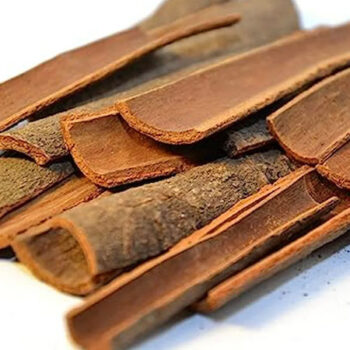
Canela (Sacha Canela, Ocotea aciphyllaa)

Sacha Canela, also known as Cinnamon of the Americas, is a tree native to the Ucayali region in the Amazon that grows to about 12-18m tall. It is one of the most popular traditional plant medicines of the jungle. Like culinary cinnamon, it contains cinnamaldehyde which has powerful antimicrobial and anti-inflammatory properties. Canela is a traditional remedy used to fight colds, flu, bronchitis, and other infections. It is also used to facilitate digestion and relieve nausea, vomiting and diarrhea, as well as regulate blood sugar and aid in the treatment of obesity and diabetes.
Many Shipibo shamans work with Sacha Canela as a herbal tea (agua de tiempo) preparation, mainly to aid in calming the nervous system and to clean energies, especially the energy of mistakes in the Dieta process. Some maestra Onánya shamans engage with Sacha Canela as their principal Master Plant teacher.
Capinuri (Maquira coriacea)
Capinuri is a tree native to South America’s tropical rainforests that can grow up to 35-50m tall. Also known as the fertility tree, Capinuri has separate male and female individuals. The resin of the Capinuri tree has traditionally been used to treat sexual impotence and internal wounds. It is also used as an anti-inflammatory to treat dislocations and hemorrhoids.
In Shipibo shamanic healing, Capinuri is a powerful Master Plant which may be prescribed as a Dieta to treat cancer and strengthen the physical body. Apprentice shamanic healers may also Diet this plant to receive its healing song Icaro, which can then be sung in Ayahuasca Ceremony.

Capinuri (Maquira coriacea)

Capinuri is a tree native to South America’s tropical rainforests that can grow up to 35-50m tall. Also known as the fertility tree, Capinuri has separate male and female individuals. The resin of the Capinuri tree has traditionally been used to treat sexual impotence and internal wounds. It is also used as an anti-inflammatory to treat dislocations and hemorrhoids.
In Shipibo shamanic healing, Capinuri is a powerful Master Plant which may be prescribed as a Dieta to treat cancer and strengthen the physical body. Apprentice shamanic healers may also Diet this plant to receive its healing song Icaro, which can then be sung in Ayahuasca Ceremony.
Capirona (Calycophyllum spruceanum)
Capirona is a strong, hardwood Amazonian tree that grows tall and direct to a height of around 35m. It’s smooth bark carries medicinal antioxidant and antimicrobial medicinal benefits which are traditionally employed to treat the skin, to heal external and internal wounds or as a hemostatic (to stop bleeding). The sap of the Capirona tree may even be applied to reduce wrinkles and heal skin blemishes or scar tissue. It may also be used internally to treat diabetes.
In Shipibo traditional healing, Capirona is a Master Plant often prescribed alongside Capinuri as a Dieta treatment for cancer and to bring general strength and vigour to the body.
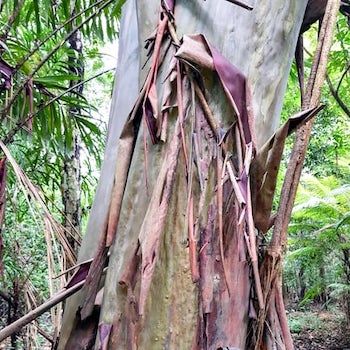
Capirona (Calycophyllum spruceanum)

Capirona is a strong, hardwood Amazonian tree that grows tall and direct to a height of around 35m. It’s smooth bark carries medicinal antioxidant and antimicrobial medicinal benefits which are traditionally employed to treat the skin, to heal external and internal wounds or as a hemostatic (to stop bleeding). The sap of the Capirona tree may even be applied to reduce wrinkles and heal skin blemishes or scar tissue. It may also be used internally to treat diabetes.
In Shipibo traditional healing, Capirona is a Master Plant often prescribed alongside Capinuri as a Dieta treatment for cancer and to bring general strength and vigour to the body.
Shipibo Dieta (Sama) practice has the potential to awaken new understandings about your life and the spiritual essences in nature.
Chiric Sanango (Brunfelsia grandiflora)
Chiric Sanango is a shrub native to the Peruvian Amazon traditionally used to treat inflammatory conditions including flu, arthritis, rheumatism and syphilis. Chiric means “cold” and Sanango means “healing medicine”, so Chiric Sanango literally means to “heal cold” (conditions). Chiric warms up the body and induces sweating and is also believed to help treat fear. It is interesting to note that inflammation in the body and problems with chronic fear are described by many Amazonian shamanic healers as “cold air.”
In traditional Shipibo shamanism, Chiric Sanango may be prescribed as an intense Dieta treatment for complex chronic physical conditions. It is considered a very challenging and powerful Master Plant requiring a great deal of respect and strict discipline of diet and thoughts. We note that some Ayahuasca centers prescribe Chiric Sanango as a beginner Dieta. We consider that type of beginner treatment with this plant to be more in the realm of remedial herbal (Raomi) medicine rather than advanced Shipibo Dieta.
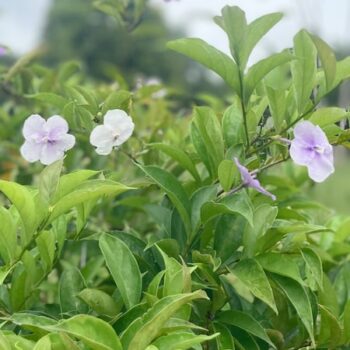
Chiric Sanango (Brunfelsia grandiflora)

Chiric Sanango is a shrub native to the Peruvian Amazon traditionally used to treat inflammatory conditions including flu, arthritis, rheumatism and syphilis. Chiric means “cold” and Sanango means “healing medicine”, so Chiric Sanango literally means to “heal cold” (conditions). Chiric warms up the body and induces sweating and is also believed to help treat fear. It is interesting to note that inflammation in the body and problems with chronic fear are described by many Amazonian shamanic healers as “cold air.”
In traditional Shipibo shamanism, Chiric Sanango may be prescribed as an intense Dieta treatment for complex chronic physical conditions. It is considered a very challenging and powerful Master Plant requiring a great deal of respect and strict discipline of diet and thoughts. We note that some Ayahuasca centers prescribe Chiric Sanango as a beginner Dieta. We consider that type of beginner treatment with this plant to be more in the realm of remedial herbal (Raomi) medicine rather than advanced Shipibo Dieta.
Coca (Erythroxylum)
The most high and sacred Master Plant of the Incas, the Coca plant has been cultivated in Peru for an estimated 8,000 years. Classified as a controlled substance in many countries for its toxic derivative forms, the natural form of Coca has been safely used for millennia by indigenous peoples without causing toxicity or dependence. Traditional medicinal uses include as a treatment for altitude sickness, as an anesthetic and headache-relieving analgesic, and as a natural stimulant to overcome fatigue and hunger.
In Shipibo shamanism a strong infusion of Coca leaves may be drunk before Ayahuasca Ceremony to aid in opening your vision. Coca is also a general purifier of the digestive system, blood and saliva. As a Shipibo Dieta, Coca is in the class of strongly purifying, mentally-elevating master Master Plants such as Piñon Blanco and Piñon Colorado. This class of plants can bring clarity to the mind, and heal patterns of neuroses, addiction and anxiety.
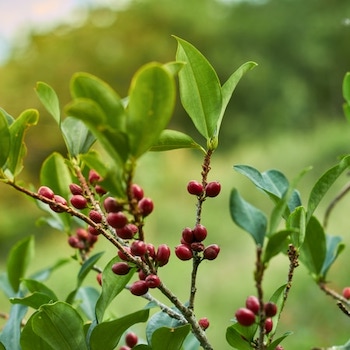
Coca (Erythroxylum)

The most high and sacred Master Plant of the Incas, the Coca plant has been cultivated in Peru for an estimated 8,000 years. Classified as a controlled substance in many countries for its toxic derivative forms, the natural form of Coca has been safely used for millennia by indigenous peoples without causing toxicity or dependence. Traditional medicinal uses include as a treatment for altitude sickness, as an anesthetic and headache-relieving analgesic, and as a natural stimulant to overcome fatigue and hunger.
In Shipibo shamanism a strong infusion of Coca leaves may be drunk before Ayahuasca Ceremony to aid in opening your vision. Coca is also a general purifier of the digestive system, blood and saliva. As a Shipibo Dieta, Coca is in the class of strongly purifying, mentally-elevating master Master Plants such as Piñon Blanco and Piñon Colorado. This class of plants can bring clarity to the mind, and heal patterns of neuroses, addiction and anxiety.
Hierba Luisa (Cymbopogon citrates)
Hierba Luisa or Lemongrass is a popular herbal medicine used the world over to treat digestive issues, nausea, vomiting, etc and to assist with pain relief, as a sleep aid and for reducing stress. It is also used to reduce fever and inflammation, and to treat cold, flu, asthma and bronchitis symptoms.
In Shipibo shamanism, Hierba Luisa is recognized as a gentle Master Plant useful for it’s energetic perfume (Inin). It may be prescribed as a gentle Dieta to improve your general energetic state. Sometimes this plant is prescribed to shamanic apprentices to help clean “mistakes” in their other Dietas and to generally perfume and re-align their energy.
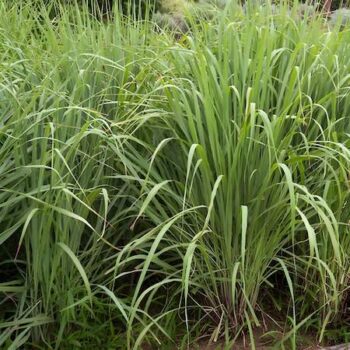
Hierba Luisa (Cymbopogon citrates)

Hierba Luisa or Lemongrass is a popular herbal medicine used the world over to treat digestive issues, nausea, vomiting, etc and to assist with pain relief, as a sleep aid and for reducing stress. It is also used to reduce fever and inflammation, and to treat cold, flu, asthma and bronchitis symptoms.
In Shipibo shamanism, Hierba Luisa is recognized as a gentle Master Plant useful for it’s energetic perfume (Inin). It may be prescribed as a gentle Dieta to improve your general energetic state. Sometimes this plant is prescribed to shamanic apprentices to help clean “mistakes” in their other Dietas and to generally perfume and re-align their energy.
Disciplined Dieta practice can be a great act of self-honoring
Malva (Malachra Ruderalis)
Malva or Wild Mallow is a perennial herb native to the western Amazonian rainforest traditionally used to relieve stomach ache and digestive problems, fever, headache, diarrhea, cough, urinary inflammation and other inflammatory conditions. Malva is also used in treating conditions associated with the female reproductive system such as menstrual cramps, and in easing childbirth.
In Shipibo shamanism, Malva is occasionally prescribed as a gentle Master Plant Dieta treatment to help reduce inflammation in the liver and soothe the nervous system. It can be a suitable treatment for energetically re-balancing the body after severe shock or surgery.
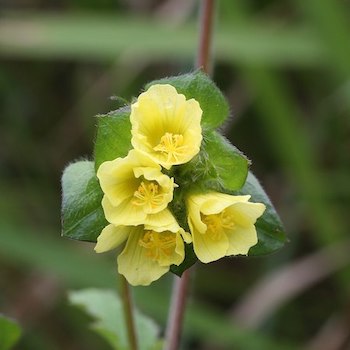
Malva (Malachra Ruderalis)

Malva or Wild Mallow is a perennial herb nativ to the western Amazonian rainforest traditionally used to relieve stomach ache and digestive problems, fever, headache, diarrhea, cough, urinary inflammation and other inflammatory conditions. Malva is also used in treating conditions associated with the female reproductive system such as menstrual cramps, and in easing childbirth.
In Shipibo shamanism, Malva is occasionally prescribed as a gentle Master Plant Dieta treatment to help reduce inflammation in the liver and soothe the nervous system. It can be a suitable treatment for energetically re-balancing the body after severe shock or surgery.
Mapacho / Tobacco (Nicotiana Rustica)
One of the most important and powerful plant medicines used in Amazonianian shamansm, Mapacho is a very potent Tobacco species considered a sacred Master Plant. The nicotine content of Mapacho is the highest amongst Tobacco plant species – at 9% (versus a typical 1-3% of Nicotina Tabacum), which, along with harmala alkaloids contained in Mapacho, give this plant mild psychoactive effects.
Many indigenous Amazonian shamans, called Tabaceros, work with Mapacho as their principle entheogenic teacher (rather than Ayahuasca). Most Ayahuasca shamans also work with Mapacho as an adjunct plant medicine for it’s power to give energetic protection, potentiate the effect of Ayahuasca, and intensify Dieta practice to higher levels of learning.
Mapacho is also recognized as having numerous medicinal benefits and has been traditionally used both internally and externally as an expectorant, an antiseptic, a treatment for skin irritations, to relieve headaches and fainting, to relieve tooth ache, and many other applications.
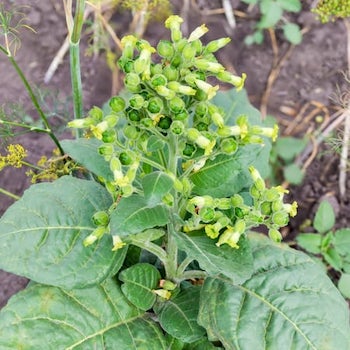
IMPORTANT CAUTION – Ingestion of Mapacho can be extremely dangerous and potentially fatal.
Mapacho / Tobacco (Nicotiana Rustica)

One of the most important and powerful plant medicines used in Amazonianian shamansm, Mapacho is a very potent Tobacco species considered a sacred Master Plant. The nicotine content of Mapacho is the highest amongst Tobacco plant species – at 9% (versus a typical 1-3% of Nicotina Tabacum), which, along with harmala alkaloids contained in Mapacho, give this plant mild psychoactive effects.
Many indigenous Amazonian shamans, called Tabaceros, work with Mapacho as their principle entheogenic teacher (rather than Ayahuasca). Most Ayahuasca shamans also work with Mapacho as an adjunct plant medicine for it’s power to give energetic protection, potentiate the effect of Ayahuasca, and intensify Dieta practice to higher levels of learning.
Mapacho is also recognized as having numerous medicinal benefits and has been traditionally used both internally and externally as an expectorant, an antiseptic, a treatment for skin irritations, to relieve headaches and fainting, to relieve tooth ache, and many other applications.
Ingestion of Mapacho can be extremely dangerous and potentially fatal.
Marosa (Pfaffia Iresinoides)
Marosa, also known as Chaikuni (or Chaiconi), is a special Master Plant for Shipibo shamans. Chaikuni literally means “wild forest spirit” but has shamanic connotations of being the highest kind of spiritual Teacher, especially of the energetic water worlds.
Marosa is traditionally known for a variety of herbal medicinal benefits. It is used internally and externally to increase energy, reduce muscle fatigue and improve muscle strength. But it’s principal purpose in Shipibo shamanism is as a high-level spiritual Teacher. In Shipibo Dieta practice Marosa is experienced by many as an almost purely feminine spirit, and is believed to teach self-love and emotional strength. A mostly tolerant Teacher, Marosa typically requires a longer Dieta period.

Marosa (Pfaffia Iresinoides)

Marosa, also known as Chaikuni (or Chaiconi), is a special Master Plant for Shipibo shamans. Chaikuni literally means “wild forest spirit” but has shamanic connotations of being the highest kind of spiritual Teacher, especially of the energetic water worlds.
Marosa is traditionally known for a variety of herbal medicinal benefits. It is used internally and externally to increase energy, reduce muscle fatigue and improve muscle strength. But it’s principal purpose in Shipibo shamanism is as a high-level spiritual Teacher. In Shipibo Dieta practice Marosa is experienced by many as an almost purely feminine spirit, and is believed to teach self-love and emotional strength. A mostly tolerant Teacher, Marosa typically requires a longer Dieta period.
I feel like I finally have an answer to life-long health problems that western medicine AND naturopathy have been unable to help me with."
Larinda S
Mucura (Petiveria alliacea)
Mucura is a popular plant medicine used throughout Central and South America for its anti-inflammatory, immuno-stimulant and analgesic properties. It has a strong, pungent smell and a sharp garlic or ginger-like flavor, and is often used to fight infections, flu and sore throat. It is also known to help control blood sugar levels.
In traditional Shipibo Dieta practice, Mucura is sometimes used as a Master Plant in place of Ajo Sacha. Mucura has similar energetic benefits as Ajo Sacha, including the gift of vigor and strength, healing of apathy or laziness and improved success with projects in life. It is also believed to help fight witchcraft.
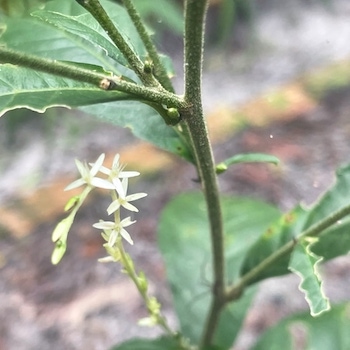
Mucura (Petiveria alliacea)

Mucura is a popular plant medicine used throughout Central and South America for its anti-inflammatory, immuno-stimulant and analgesic properties. It has a strong, pungent smell and a sharp garlic or ginger-like flavor, and is often used to fight infections, flu and sore throat. It is also known to help control blood sugar levels.
In traditional Shipibo Dieta practice, Mucura is sometimes used as a Master Plant in place of Ajo Sacha. Mucura has similar energetic benefits as Ajo Sacha, including the gift of vigor and strength, healing of apathy or laziness and improved success with projects in life. It is also believed to help fight witchcraft.
Noya Rao (Palo Volador, Flying Tree, or Tree of Angels)
Noya Rao is a special legendary Master Plant tree in Shipibo shamanism, believed by some to be extinct, and by others to exist in only a few rare living examples today. The spiritual energy of this tree of the ancestors is held as a sacred treasure of the highest light. It has been passed down from generation to generation through Dieta practice in certain renowned shamanic families, including the Mahua family. Maestra Lucinda Mahua is a lineage bearer of this high and delicate energy.
Noya Rao means Flying Medicine in Shipibo. The tree is given this name for the visions of flying angel-like spirits which may be gifted to those who enter into long, disciplined Dieta practice with the Noya Rao energy. The energy of Noya Rao is very sensitive to disruption, especially by the energy of blood. Dieting Noya Rao therefore requires long-term attention to minimizing exposure to the presence of blood.
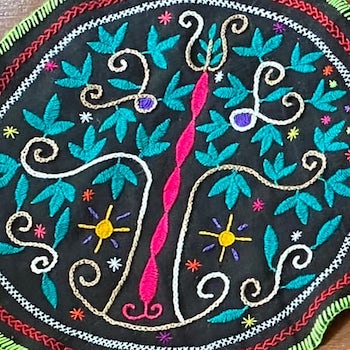
Noya Rao (Palo Volador, Flying Tree, or Tree of Angels)

Noya Rao is a special legendary Master Plant tree in Shipibo shamanism, believed by some to be extinct, and by others to exist in only a few rare living examples today. The spiritual energy of this tree of the ancestors is held as a sacred treasure of the highest light. It has been passed down from generation to generation through Dieta practice in certain renowned shamanic families, including the Mahua family. Maestra Lucinda Mahua is a lineage bearer of this high and delicate energy.
Noya Rao means Flying Medicine in Shipibo. The tree is given this name for the visions of flying angel-like spirits which may be gifted to those who enter into long, disciplined Dieta practice with the Noya Rao energy. The energy of Noya Rao is very sensitive to disruption, especially by the energy of blood. Dieting Noya Rao therefore requires long-term attention to minimizing exposure to the presence of blood.
Oje Blanco (Ficus Insipida)
Oje Blanco is a tall, leafy tree found throughout the Amazon rainforest, renowned for its rubber-like latex which has many medicinal and industrial purposes. Sap of the Oje tree has traditionally been used in the treatment of intestinal parasites and uta infections (leishmaniasis cutánea), snake bites and stings. It has also been used as an analgesic in dental extractions.
In traditional Shipibo shamanism, Oje Blanco is a Master Plant which may be prescribed as a blood purifier, particularly in cases with a history of substance abuse or heavy medication use. It is believed to help increase blood flow and clear the digestive tract. Oje Blanco is toxic when consumed in quantity, and cannot normally be combined with Ayahuasca.
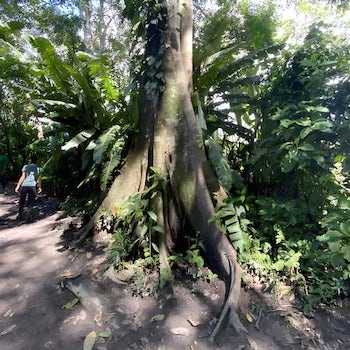
Oje Blanco (Ficus Insipida)

Oje Blanco is a tall, leafy tree found throughout the Amazon rainforest, renowned for its rubber-like latex which has many medicinal and industrial purposes. Sap of the Oje tree has traditionally been used in the treatment of intestinal parasites and uta infections (leishmaniasis cutánea), snake bites and stings. It has also been used as an analgesic in dental extractions.
In traditional Shipibo shamanism, Oje Blanco is a Master Plant which may be prescribed as a blood purifier, particularly in cases with a history of substance abuse or heavy medication use. It is believed to help increase blood flow and clear the digestive tract. Oje Blanco is toxic when consumed in quantity, and cannot normally be combined with Ayahuasca.
Piñon Blanco (Jatopha Curcas)
Piñon Blanco is high in major alkaloids and has traditionally been used for its antimicrobial and anti-inflammatory and analgesic benefits. Believed to have anti-cancerous properties, Piñon Blanco is also used for treating wounds, skin infections, burns, abscess, diarrhea, fever, headache, bronchitis, internal hemorrhage, tumors, rhemautism, arthritis and other diseases.
In traditional Shipibo shamanism Piñon Blanco may be prescribed as a strong purgative and blood purifier in cases of toxic congestion in the blood, liver and digestive system. Pinon Blanco is also used as a powerful and intense shamanic Dieta because it is believed to open a strong connection with “cosmic light”. It is also used to help clear neuroses and anxiety and all kinds of addictive tendencies.
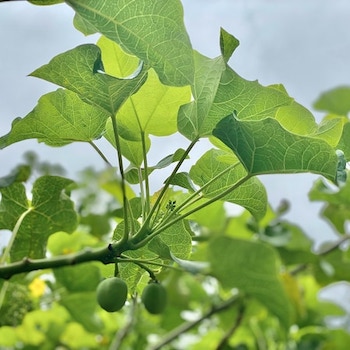
Piñon Blanco (Jatopha Curcas)

Piñon Blanco is high in major alkaloids and has traditionally been used for its antimicrobial and anti-inflammatory and analgesic benefits. Believed to have anti-cancerous properties, Piñon Blanco is also used for treating wounds, skin infections, burns, abscess, diarrhea, fever, headache, bronchitis, internal hemorrhage, tumors, rhemautism, arthritis and other diseases.
In traditional Shipibo shamanism Piñon Blanco may be prescribed as a strong purgative and blood purifier in cases of toxic congestion in the blood, liver and digestive system. Pinon Blanco is also used as a powerful and intense shamanic Dieta because it is believed to open a strong connection with “cosmic light”. It is also used to help clear neuroses and anxiety and all kinds of addictive tendencies.
Holding the keys to the ancient wisdoms of the natural world
Piñon Colorado (Jatropha Gossypiifolia)
Piñon Colorado is a popular plant medicine in traditional Amazonian healing, known for its antimicrobial and anti-inflammatory healing actions, and also its use in treating gastrointestinal problems, stomach cramps, ulcers, etc. The resin of Piñon Colorado is also used topically to heal wounds, burns and insect bites or poisonous animal bites.
In Shipibo shamanism, Piñon Colorado is considered a powerful Master Plant. It is often prescribed to clean dark, “parasitic energies” and intense emotions of fear and paranoia. One of the more challenging Shipibo Dietas, Piñon Colorado is believed to bring excellent energetic protection when Dieted with good discipline for longer periods.
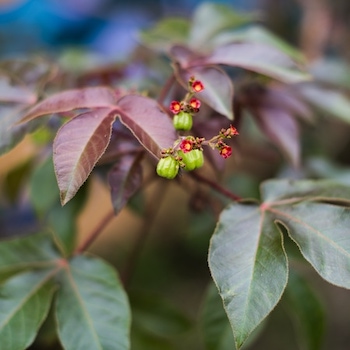
Piñon Colorado (Jatropha Gossypiifolia)

Piñon Colorado is a popular plant medicine in traditional Amazonian healing, known for its antimicrobial and anti-inflammatory healing actions, and also its use in treating gastrointestinal problems, stomach cramps, ulcers, etc. The resin of Piñon Colorado is also used topically to heal wounds, burns and insect bites or poisonous animal bites.
In Shipibo shamanism, Piñon Colorado is considered a powerful Master Plant. It is often prescribed to clean dark, “parasitic energies” and intense emotions of fear and paranoia. One of the more challenging Shipibo Dietas, Piñon Colorado is believed to bring excellent energetic protection when Dieted with good discipline for longer periods.
Planta de la Vida (African Milk Plant, Synadenium Grantii)
Planta de la Vida is a plant of both African and American origin. The resin (or latex) from this attractive plant is a highly toxic substance that has been used traditionally (in minute doses) for its anti-cancer, anti-inflammatory, antimicrobial and antioxidant properties. It is also known as a treatment for reflux, gastritis, peptic ulcer, allergies, obesity and diabetes.
In Shipibo shamanism, some master Onánya healers work with Planta de la Vida as a gentle physical healing Master Plant Dieta. It is considered to have a delicate energy with a lot of “light” in its spiritual world.
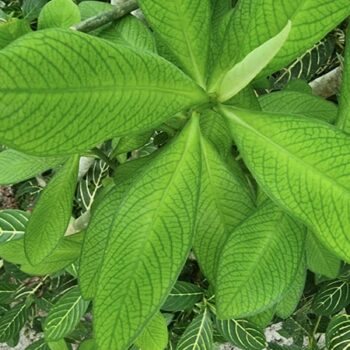
Planta de la Vida (African Milk Plant, Synadenium Grantii)

Planta de la Vida is a plant of both African and American origin. The resin (or latex) from this attractive plant is a highly toxic substance that has been used traditionally (in minute doses) for its anti-cancer, anti-inflammatory, antimicrobial and antioxidant properties. It is also known as a treatment for reflux, gastritis, peptic ulcer, allergies, obesity and diabetes.
In Shipibo shamanism, some master Onánya healers work with Planta de la Vida as a gentle physical healing Master Plant Dieta. It is considered to have a delicate energy with a lot of “light” in its spiritual world.
Shipibo shamans say the plants themselves are the true teachers of their beautiful healing song Icaros.
Rosa Sisa (Mexican Marigold, Tagetes Erecta)
Rosa Sisa is a popular, gentle Amazonian herbal plant medicine traditionally used to help calm nerves, improve sleep, and treat stomach cramps, vomiting and diarrhea. This plant is also used topically in flower baths for children, to bring a comforting and calming energy.
Rosa Sisa is used in traditional Shipibo shamanism as a nurturing, calming and strengthening Master Plant, especially suited to children. Shipibo shamans will often prescribe Rosa Sisa Dieta for their own children to clean and protect them from negative energies.
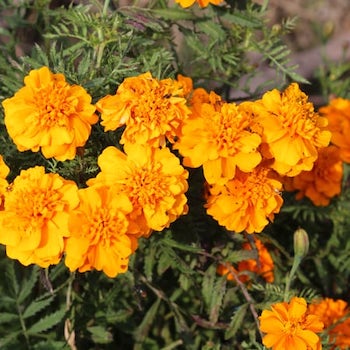
Rosa Sisa (Mexican Marigold, Tagetes Erecta)

Rosa Sisa is a popular, gentle Amazonian herbal plant medicine traditionally used to help calm nerves, improve sleep, and treat stomach cramps, vomiting and diarrhea. This plant is also used topically in flower baths for children, to bring a comforting and calming energy.
Rosa Sisa is used in traditional Shipibo shamanism as a nurturing, calming and strengthening Master Plant, especially suited to children. Shipibo shamans will often prescribe Rosa Sisa Dieta for their own children to clean and protect them from negative energies.
Suelda con Suelda (Phthirusa, Loranthaceae)
Suelda con Suelda is a semi-parasitic mistletoe plant native to the Americas. There are numerous types of Suelda mistletoe in the Amazon, each named by their host plant (e.g. Suelda Limon, Suelda Ayahuasca, etc). Suelda is also called Bone Heal as the leaves have traditionally been used (both internally and topically) to heal bone fractures and dislocations, and to relieve muscle and joint pain. It is also known to help treat stomach ulcers, and skin infections.
In traditional Shipibo shamanism Suelda con Suelda is a popular Master Plant often prescribed to help strengthen the musculo-skeletal system and calm the nervous system. It is considered to be mostly feminine in its energy, and is also believed to help heal romantic problems. This is interesting considering that Suelda plants typically achieve long-lasting intimate relationship with their host plants.

Suelda con Suelda (Phthirusa, Loranthaceae)

Suelda con Suelda is a semi-parasitic mistletoe plant native to the Americas. There are numerous types of Suelda mistletoe in the Amazon, each named by their host plant (e.g. Suelda Limon, Suelda Ayahuasca, etc). Suelda is also called Bone Heal as the leaves have traditionally been used (both internally and topically) to heal bone fractures and dislocations, and to relieve muscle and joint pain. It is also known to help treat stomach ulcers, and skin infections.
In traditional Shipibo shamanism Suelda con Suelda is a popular Master Plant often prescribed to help strengthen the musculo-skeletal system and calm the nervous system. It is considered to be mostly feminine in its energy, and is also believed to help heal romantic problems. This is interesting considering that Suelda plants typically achieve long-lasting intimate relationship with their host plants.
Ubos (Spondias mombin)
Ubos is a tree native to the Americas that grows up to 20m tall. It has traditionally been used for its powerful medicinal properties including anti-inflammatory, antibacterial and antiseptic properties. It is also used to treat digestive issues such as dysentery and diarrhea, and the juice of the fruit is considered diuretic and fever reducing. Preparations of the bark, leaves or flowers are used to treat throat inflammation, hemorrhoids and vomiting. Topically Ubos is used to heal wounds, ulcers and burns.
In traditional Shipibo shamanism Ubos is a powerful Master Plant often prescribed as an intense Dieta treatment for cancer, along with the Capinuri and Capirona trees. These 3 trees administered together are known to clean, heal and strengthen the internal “skin” of our organs.
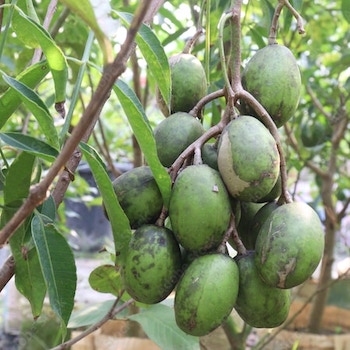
Ubos (Spondias mombin)

Ubos is a tree native to the Americas that grows up to 20m tall. It has traditionally been used for its powerful medicinal properties including anti-inflammatory, antibacterial and antiseptic properties. It is also used to treat digestive issues such as dysentery and diarrhea, and the juice of the fruit is considered diuretic and fever reducing. Preparations of the bark, leaves or flowers are used to treat throat inflammation, hemorrhoids and vomiting. Topically Ubos is used to heal wounds, ulcers and burns.
In traditional Shipibo shamanism Ubos is a powerful Master Plant often prescribed as an intense Dieta treatment for cancer, along with the Capinuri and Capirona trees. These 3 trees administered together are known to clean, heal and strengthen the internal “skin” of our organs.